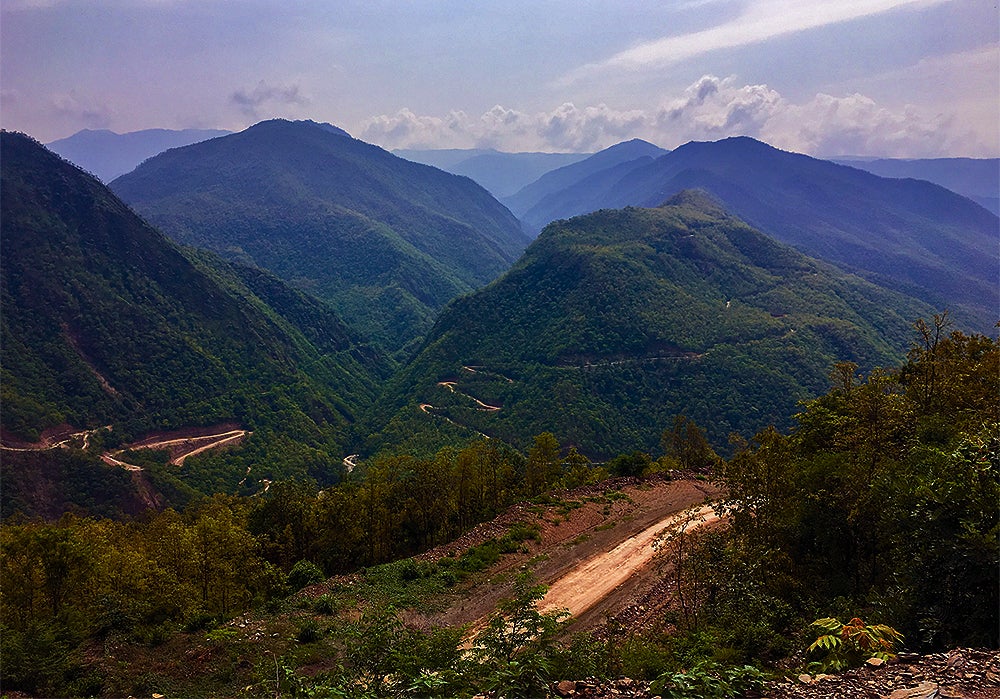Also available in Myanmar

My journey to Chin state in Myanmar began with a simple question from my colleague – “Where do you want to go?”
“It doesn’t matter,” I said, “Anywhere is fine.”
This was it. I had volunteered to join the World Bank Group’s Myanmar Performance Learning Review consultations, which are being held across the country this month to obtain feedback from the government, private sector and civil society on our Country Partnership Framework. Approved in 2015, the partnership is the first World Bank Group strategy for Myanmar in 30 years and consultations are being held to discuss lessons-learned, review achievements and consider adjustments.
“Hakha in Chin state it is,” said my colleague Kyaw Soe Lynn with a smile.
It was at that point I began my research on Hakha, which is close to the Indian border. I learned that Chin is the second poorest state in Myanmar, located in the mountains and that the Flood and Landslide Recovery Project, supported by the World Bank, aims to rehabilitate a road from Falam to Hakha once the Environmental and Social Investment Assessment is done.
The experience from the trip itself had a deeper meaning for me and our team than the facts I’d learned during research. It was the experience of spending a few hours at a standstill on the road. This, however, was nothing compared to the people of Chin state who have spent decades at a standstill on the road to development.
This trip made us recognize the interconnection between roads and access to food, roads and access to education, roads and access to electricity, roads and access to services. We realized that the beauty we experienced could be a boost to tourism, if only roads were safer.

In order to get to Hakha, our team had to first fly to Kalaymyo and then drove the long stretch from there to Falam and finally to Hakha. We left at 7 am, excited to be on our first trip to Chin State. There was a light drizzle as we began our ascent up the mountain, but we could still take in the breathtaking view. We were above the clouds and when we looked down there was a never-ending sea of green covered mountains. It was serene and uplifting.
At 9 am after driving 35 km, we came to a halt. During the first few minutes, we began to assess the situation. What we gathered was that there was a landslide blocking the road, which had occurred during the night. There were over a hundred cars ahead of us. The view had changed to an enormous brick mountain of mud on one end and a smooth slick slope on the other end.
Around 11 am, we contemplated an escape route. We thought about turning back, but realized that the road back was narrower, with cars blocking ahead and behind, not leaving much room to maneuver. In addition, the roads were slippery and muddy making the journey treacherous. We saw people walking up the mountain toting babies and suitcases, motorcycles trying to wiggle through the waiting cars. In the end, we and other people on buses and trucks, just sat and waited for the excavator truck to come and remove the road block, hoping that the landslide ahead was the last one.

We gave a cry of jubilation when at 1 pm, we saw the excavator truck, signaling the end of our wait.
By 4:30 pm, we finally got out and continued to drive over five hours along the windy and muddy road over hills and valleys, and finally arrived at Hakha at 7:30 in the morning. It was during our 9:30 am meeting that we heard the words of H.E. U Pu Sui Thio, Chin State’s Minister of Transportation, after he expressed his appreciation for our trip during the rainy season.
“I wish the speed of implementing this road would be swifter than your voice,” he said. He didn’t have to explain any further – we understood fully what he meant.
This trip brought home the power of experience, being in the situation, and talking face-to-face with our key counterparts. The consultations and this trip brought back a sense of urgency in the execution of the Environmental and Social Investment Assessments so we can help build roads faster than our words.
After a review of the current Country Partnership Framework and listening to stakeholders across 14 states and regions including Chin, Myanmar and the World Bank Group agreed to a two-year extension. This extension will help Myanmar strengthen its programs and reforms that will promote growth in rural areas, improve nutrition, health and education services, create more jobs, and build better infrastructure. This means better roads and connectivity that allow Myanmar people to seize market opportunities in their region and beyond, setting the standards for future road construction in the country.
It has been a privilege to work for the people of Myanmar and for that – Kar Lun Tu – thanks for the friendship from Chin.





Join the Conversation